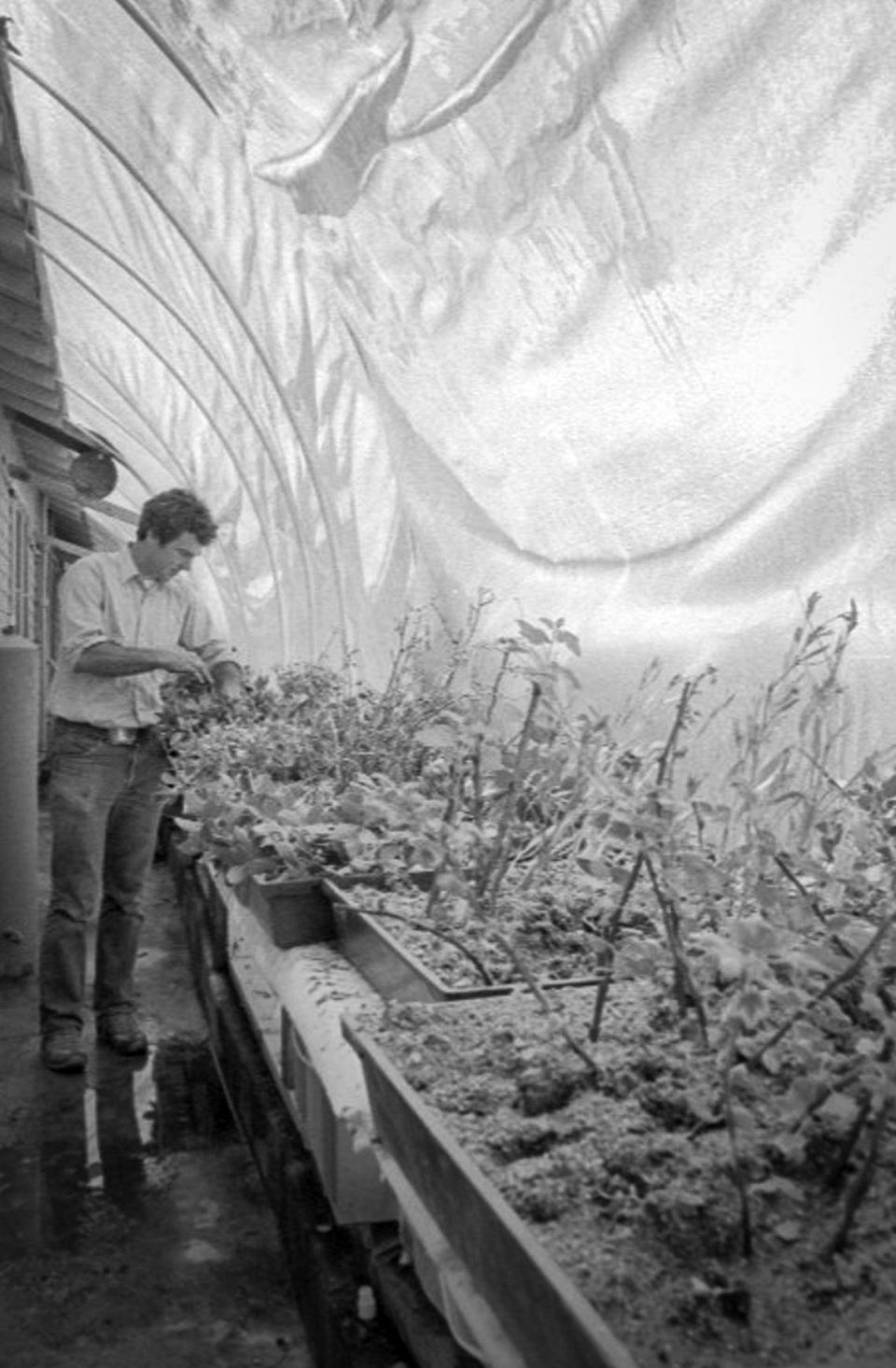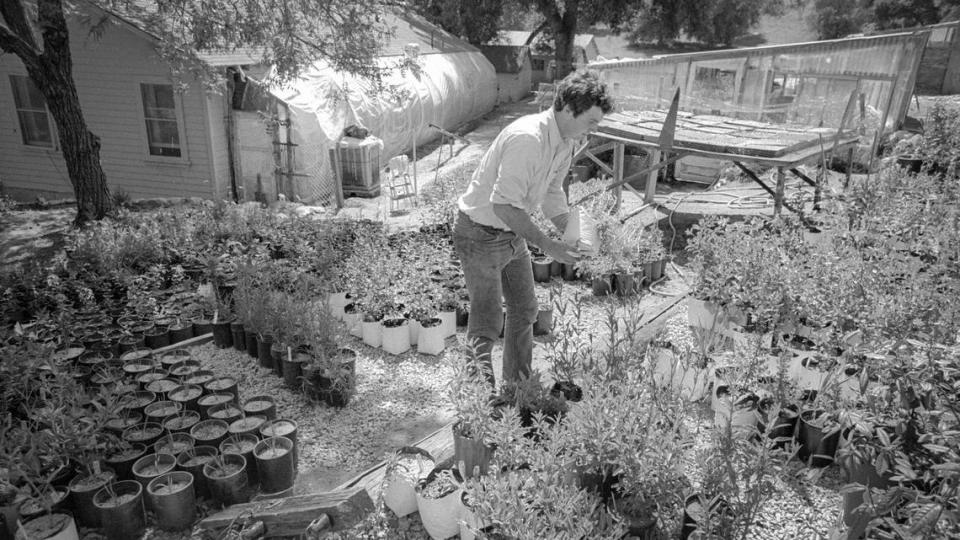SLO County nursery has been selling native plants for 50 years. Here’s how it got started
In the 19th and early 20th century it was popular to bring exotic plants such as eucalyptus trees to California from faraway continents.
Invasive non-native species can create environmental deserts and crowd out habitat for local critters and plants.
The environmental movement that took root in the 1960s led to a renewed appreciation of the value of native plants, but commercial nurseries were still stocking the old inventory.
Bert and Celeste Wilson founded Las Pilitas Nursery in 1974 to fill that niche in the market, eventually moving operations from their San Luis Obispo backyard to a property on Las Pilitas Road in Santa Margarita.
The founders’ children recently reopened the nursery to in-person shopping after closing the business to the public due to the COVID-19 pandemic.
Linnea Waltz wrote about the business in its early days in a May 1, 1981, Telegram-Tribune story.

Native plants make gardening easy
Trees and flowering shrubs which naturally decorate the countryside can decorate the home garden all year with little effort.
These plants also beautify with a minimum of care and water. In addition, they’re generally not on a gopher’s diet list.
All of these things were discovered by a young Cal Poly student working as a landscape contractor to put himself through a chemistry major course.
The practical aspect, as well as the beauty of native plants appealed to Bert Wilson. He persuaded several clients to redo their properties in native plants, which created the problem of obtaining enough native plants for his jobs.
Wilson and his wife, Celeste, bought 36 acres of canyon land on Las Pilitas Road east of Santa Margarita and Wilson began growing the stock he needed.
From this, the Wilsons began Las Pilitas Nursery, primarily wholesale and mail order, devoted exclusively to native plants.
Cuttings, seeds and roots are used in propagating. Gathering is done at various times of the year, Wilson said, and in various ways.
The nursery has a U.S. Forest Service permit to gather material within national forest boundaries. Gathering is also done from mother stock growing on the ranch’s uncultivated 36 acres or planted by the Wilsons around the nursery area.
“We can get about 200 cuttings off four plants of mother stock per year,” he said, in explaining that propagating by cuttings of varieties on hand requires little time away from the ranch.
“We carry paper sacks when we’re seed gathering,” Wilson said. “We also obtain seeds from wholesalers in Idaho and Southern Oregon, and we’re members of the Northern Nevada Native Plant Society where we obtain seeds of desert plants.”
He said the nursery in the two years of operation has more than 200 native plant varieties growing. “Our goal is 500,” Wilson said.
Wilson uses the same mix for planting cuttings and for starting seed — sand and Pearlite. He uses no fertilizer in the propagating process, but carefully controls the humidity.
“That’s why the two greenhouses,” he said. “You have to keep the humidity just right. If the atmosphere is too moist, cuttings and young seedlings will rot; if too dry, they’ll wilt and die.”
Some cuttings must have bottom heat, especially manzanita. Others must be kept at air temperature.
Root cuttings are used for certain native plants, such as Indian Warrior and Matilija poppy; and some plants make poor conformation from cuttings. some varieties of Ceanothus, for example. The difficult varieties usually are propagated by seed.
The young plants are placed in four-inch pots. “We mail order these,” Wilson said. He explained, as an instance, that bay trees after they fill a four-inch pot, take another six months to a year before they’re ready for a gallon can.
“Fremontia takes two months, Ceanothus one or two months,” he said. “Plants which grow fast usually are placed in peat moss pots so that when the roots hit the air they’re air pruned and grow a fine root system inside the pot.
He said the times for gathering cuttings and seeds varies, “and you can’t follow the books.”
“You get a feel as to when the cuttings are ready to be made from a plant,” Wilson said. “My wife has the feel for this. She gathers the cuttings from the mother stock and does the watering at the nursery.”

Seeds are planted in trays on seed tables outdoors positioned as near to their native conditions as possible. For instance, desert plant seeds are kept in full sun. “They just don’t work any other way,” Wilson said.
Wilson designed the seed tables with 10 to 12-inch overhangs, so mice can’t get from the table legs to the tops. The tables, also have bird mesh screens surrounding them. “Our seed-growing problems mainly are mice and birds,” he said.
Wilson said, “None of this is in books and not much is written about growing native plants. Although a lot of it has been done before, it hasn’t been recorded. I’ve had to talk with a lot of others as well as experiment on my own to learn what I have about native plants.”
He also has a library of material on plant propagation he’s sent away for “and I try to apply what’s in the books, adapting it to what we’re doing at Las Pilitas Nursery,” he said.
“Most of the time, however, it’s plant it, then wait and see what happens.”

